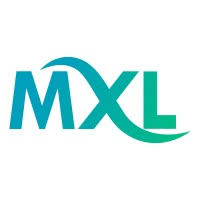
Robinjasper1109
Uploaded on Sep 2, 2025
In a world where information is abundant and attention is scarce, traditional corporate training can feel like a relic of the past. Long, multi-day seminars and dense manuals are increasingly ineffective for a workforce that demands flexibility and instant access to knowledge. This is where microlearning enters the picture, offering a refreshingly simple and powerful solution. For beginners, the concept can seem complex, but at its core, it is nothing more than this: learning in small, digestible, and highly focused chunks. This guide will simplify the concept and show you why it’s not just a trend, but a fundamental shift in how we learn and grow in today’s modern economy. The What: Defining the Basics Microlearning is the delivery of content in short, bite-sized units, typically lasting between 2 to 10 minutes. The golden rule is that each unit should address only one single learning objective. Instead of a two-hour course on "Customer Service Best Practices," a microlearning approach would break it down into several distinct Microlearning Courses, such as: "How to Greet a Customer," "Handling a Customer Complaint," and "Upselling a Product." This focused, singular approach prevents cognitive overload and makes information easier to retain and apply. The Why: The Benefits for Everyone The benefits of this simplified approach are immense for both employees and organizations. For the Learner: Microlearning provides unparalleled flexibility. Professionals in industries from Banking to Mining can fit learning into their busy schedules, whether during a commute or a brief break. This Microlearning Application empowers them to learn "just-in-time," accessing the exact information they need at the moment they need it, which is far more effective than trying to recall a lesson from a seminar weeks ago. For the Organization: Microlearning is cost-effective and efficient. The development time for a short video or a quiz is far less than that of a full-scale course. Plus, it significantly boosts engagement and completion rates, as learners are far more likely to finish a quick module than a lengthy one. The How: Making it Work The secret to microlearning's effectiveness lies in its practical implementation, which is heavily supported by the right technology. Diverse Formats: A truly effective Microlearning Platform utilizes a variety of content formats to keep learners engaged. This isn’t just about text; it includes short videos, interactive infographics, quizzes, and even short simulations. The best Microlearning Software can handle all these formats seamlessly, making the learning experience dynamic and interesting. Accessible on All Devices: A core tenet of microlearning is accessibility. The content must be available on any device—desktops, tablets, and especially smartphones. This is crucial for industries with field teams, such as Oil and Gas and Insurance, where employees need to access information on the go. Leveraging Technology: The technology supporting microlearning has evolved dramatically. A simple Microlearning LMS can manage your content, but a more advanced AI-Powered Learning Platform can personalize the entire learning journey. It can analyze a learner's performance and recommend specific microlearning courses to fill knowledge gaps. To create this content, companies use sophisticated Microlearning Authoring Tools. The latest innovations include an AI-powered Authoring Tool that can help transform existing long-form content into a series of bite-sized modules, significantly accelerating the content creation process. Real-World Applications Across Industries Microlearning's versatility makes it a perfect fit for a variety of sectors, offering concrete solutions to industry-specific challenges. In Finance, it can be used for quick updates on new compliance regulations or software features, ensuring all employees are up-to-date. The Retail industry can use it for quick, on-the-floor training on new product arrivals or seasonal promotions, empowering staff to serve customers better. For Health care professionals, microlearning provides a life-saving way to disseminate critical updates on new procedures or patient safety protocols in an easy-to-digest format. In the Mining and Oil and Gas sectors, microlearning is crucial for reinforcing safety protocols and equipment operation procedures, reducing risk and improving efficiency. In Pharma, it can be used to quickly train a sales force on a new drug’s benefits or to deliver short refreshers on complex chemical processes. Conclusion The concept of microlearning is simple: it’s about providing learners with the right information, at the right time, in the right amount. By focusing on this principle, and by leveraging the power of modern microlearning platforms and tools, any organization can transform its approach to training. This isn’t just about making learning shorter; it’s about making it smarter, more effective, and more aligned with the needs of today's dynamic workforce. For any business looking to stay agile and competitive, embracing microlearning is no longer an option—it’s a necessity.

Comments